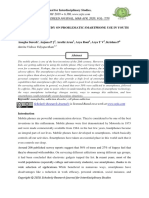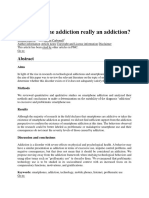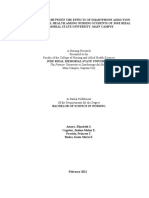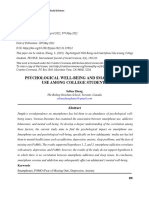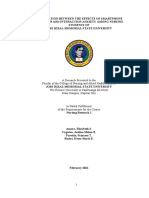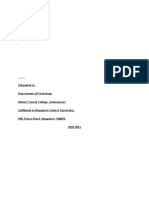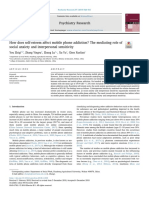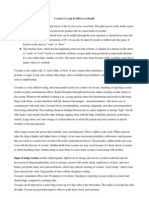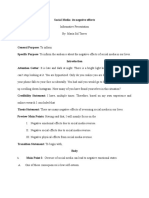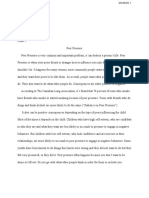0% found this document useful (0 votes)
18 views6 pagesG-8 (Research Report) 01
The document discusses the phenomenon of smartphone addiction, particularly among teenagers, highlighting its negative impact on mental health, including anxiety, depression, and social isolation. It aims to explore the causes and consequences of smartphone addiction through a descriptive research design involving surveys and qualitative interviews at Agusan National High School. The findings are intended to promote healthier smartphone usage and enhance mental well-being among adolescents.
Uploaded by
ggmurin23Copyright
© © All Rights Reserved
We take content rights seriously. If you suspect this is your content, claim it here.
Available Formats
Download as DOCX, PDF, TXT or read online on Scribd
0% found this document useful (0 votes)
18 views6 pagesG-8 (Research Report) 01
The document discusses the phenomenon of smartphone addiction, particularly among teenagers, highlighting its negative impact on mental health, including anxiety, depression, and social isolation. It aims to explore the causes and consequences of smartphone addiction through a descriptive research design involving surveys and qualitative interviews at Agusan National High School. The findings are intended to promote healthier smartphone usage and enhance mental well-being among adolescents.
Uploaded by
ggmurin23Copyright
© © All Rights Reserved
We take content rights seriously. If you suspect this is your content, claim it here.
Available Formats
Download as DOCX, PDF, TXT or read online on Scribd
/ 6








